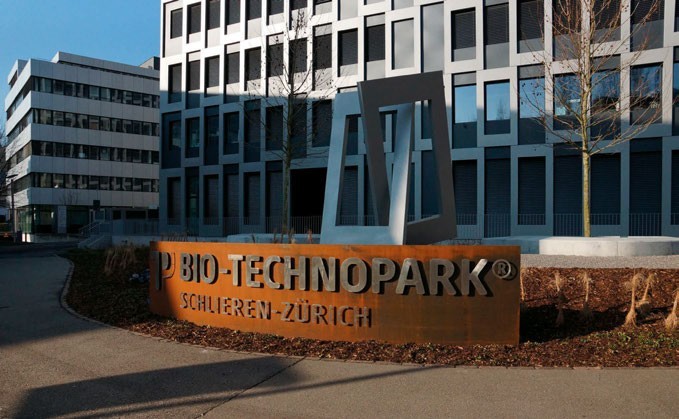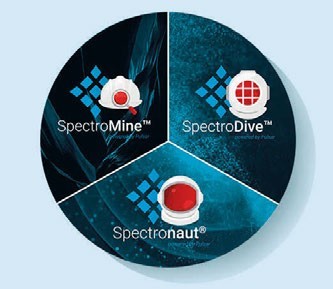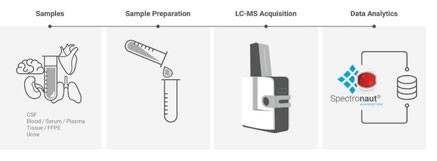Discovery & Development: Proteomics
Mass spectrometry and proteomics: leading the charge in drug development
IPT talks to Oliver Rinner of Biognosys about Bruker’s recent majority investment in the business and how this, along with its own developments, will affect the future of proteomics research
IPT: Biognosys and Bruker formed a strategic partnership in January 2023 – what prompted this move?
Oliver Rinner (OR): Bruker is widely recognised as a leading provider of instruments in mass spectrometry (MS) and other high tech areas like nuclear magnetic resonance (NMR) spectroscopy. Bruker also invests in enabling solutions around mass spectrometers, like imaging, clinical diagnostics and microbiology. At Biognosys, we have more than a decade of experience in developing market-leading software to analyse MS data, so the partnership was a natural fit.
Beyond software, Bruker also values Biognosys’ contract research services and how we work with biopharma customers in their drug development projects. Through our collaboration, we can build strong bridges for our pharma partners between proteomics technology and its applications for drug development. This was also a key driver for the partnership.
IPT: What do both companies hope to achieve with this partnership?
OR: Biognosys and Bruker share a common mission – to understand the proteome on all levels and to make proteomics technology accessible for researchers to advance life sciences and medicine. It is known that proteomics is more difficult to perform than genomics, because the technology is relatively new compared to genomics and is still developing. We’ve found that enabling researchers to investigate proteomics more effectively has two aspects. Firstly, manufacturing advanced instrumentation and optimising all the steps that are needed upstream and downstream – from sample preparation to making data analysis easier and accessible to more people. Secondly, giving customers direct access to proteomics with out-sourced contract research services. All these activities feed into our common goal of advancing the field of proteomics.
IPT: How has the partnership developed since January 2023?
OR: It's developed a lot! It's all about building strong relationships between the R&D, sales and marketing teams, learning from one another and asking the question, ‘What matters to our customers?’ Biognosys and Bruker are in the same market, so we share many customers, but still have slightly different value propositions. Aligning our offerings more closely is the main objective.
IPT: How has proteomics research positively impacted the discovery and development of targeted therapies?
OR: Even though proteomics produces huge amounts of data, I like to think of it not as a big data science approach, but as the technology of choice to perform mechanistic biological studies – a next-level version of cell biology and biochemistry with a larger scale and broader scope. In this way, proteomics helps biologists understand cell biology much faster and more efficiently than they could before. Targeted therapies are a prime example of the importance of having a mechanistic understanding of specific cancer pathways: this is a natural application for proteomics. With phosphoproteomics, for instance, we can cover a large portion of all the existing pathways and see how the phosphorylation sites are going up or down – this is how you look at activated pathways in a comprehensive manner. You can do this with thousands of phosphorites, but the impact of proteomics is not limited to targeted therapies alone.

Biognosys' campus at the Bio-Technopark in Schlieren-Zürich
Other areas where MS proteomics greatly impacts drug development are protein degraders and covalent inhibitors. Proteomics is not just about protein quantification but can also provide insights into protein function and how proteins are changing or being modified. Proteomics lets you identify covalently modified proteins directly, as well as proteins that are degraded. These are natural applications for proteomics where we are seeing a significant impact at the moment.

Biognosys' software suite for mass spectrometry data analysis
IPT: Bruker’s timsTOF platform offers ‘proteomics unimpaired by epitope cross-reactivity’; how will access to this aid Biognosys’ current research?
OR: In general, all MS-based proteomics differs from proteomics with reagents, like antibodies, in that it has a very high specificity. It’s a physical method with a very high resolution, so unlike affinity-based methods, there is no cross-reactivity. This allows us to quantify thousands of proteins in parallel with very high specificity, which wouldn't work if you had cross-reactivity issues. The Bruker timsTOF specifically brings one additional important benefit, which is the combination of this high sensitivity and specificity with high throughput. High throughput means you can carry out this process with many samples – hundreds or even thousands. In the past, proteomics was used for very small experiments – very deep and sophisticated, but small-scale. Now, the main goal is to increase the throughput so that you can also run proteomics in cell screens with thousands of cells or in thousands of patients.
Here, the timsTOF is particularly fast and I would say this is one of the main contributions it has made. A decision we took together with Bruker to help advance the proteomics field is to continue to support users of all instrument vendors with Biognosys’ software. We do this because if each vendor had its own software, it would be difficult to compare results. You couldn't be sure if results were affected by the vendor-specific way the data is analysed – and that would really hurt the field. We want to set the gold standard for data analysis so that the field can advance without the risk of differing data processes.

Biognosys' research services workflow powered by Bruker timsTOF
Every instrument has its own strengths and Bruker’s MS portfolio offers a wide range of analytical possibilities. It remains important to establish MS proteomics in general in the field because it is complex and difficult to handle. For many biologists, there are still hurdles to overcome when using the power of proteomics.
IPT: Looking to the future, what are the most exciting developments in Biognosys’ pipeline?
OR: These are interesting times because the field is developing so rapidly. A key topic for us is automation and consequently high throughput, which will allow us to move to much larger cohorts of samples by combining robotics and automation with data analysis. This is one direction where we’re investing significantly and seeing a lot of progress.
As a more specific example, we are excited by our ability to use ‘limited proteolysis’, which we continue to license from the Institute of Pharmaceutical Sciences at the Swiss Federal Institute of Technology Zürich (ETH, Zürich). This is an MS technology that not only analyses changes in quantity, but also in protein structure, essentially turning the mass spectrometer into a structural biology tool – and structure is highly relevant to function. In the past, it took years to resolve a protein structure, but now almost all protein structures are available to download on AlphaFold. Today, we can use the mass spectrometer to look at changes in structure. This will enable the field to have a far more mechanistic view of the proteome and aid paradigm shifts in how we look at protein-protein interactions and drug interactions. There is also great potential for these instruments to become faster and more sensitive by improving the fundamental physical principles, as well as new and exciting technology in the pipeline that will increase the performance of mass spectrometers.
Overall, the huge potential of AI is very exciting, as it allows us to go deeper into proteomics data. AI is an almost perfect match for data produced by a mass spectrometer. As we are seeing deeper than ever before, a large part of the signals that mass spectrometers pick up are still unexplained, but we know they are real and may be biologically meaningful. Already, we can boost the number of signals detected, but I believe in the near term, we will make huge progress in getting even deeper. This is an area we invest in as well and I'm excited to see how deep we can go. Beyond mass spectrometric data, the main way forward is better use of the data gathered, in the sense of interpreting these very deep data sets to make biological sense out of them. Here, AI will also play a role in putting this data into context of the pathways that could be affected and the mechanisms that could be behind changes in protein concentration.
Dr Oliver Rinner is co-founder and CEO of Biognosys. He’s led Biognosys for 15 years, most recently seeing the company through a majority ownership partnership with Bruker in January 2023. His background is in psychology and then he moved into the biochemistry and proteomics fields. He joined Ruedi Aebersold, a pioneer in modern proteomics, at the ETH Zürich, where computing was used to interpret mass spectra for mass spectrometers. Moving from academic institutions to a more commercial focus, Oliver co-founded Biognosys and worked with mostly US-based venture financed, early-stage biotechs, making use of their openness to try new things and their need to better understand the biology of their programmes. The company then decided that the software it had developed was key for this work and that it should be available commercially, supporting the proteomics field with this software and other services.
biognosys.com/contact-us/
info@biognosys.com
+41 44 738 20 40